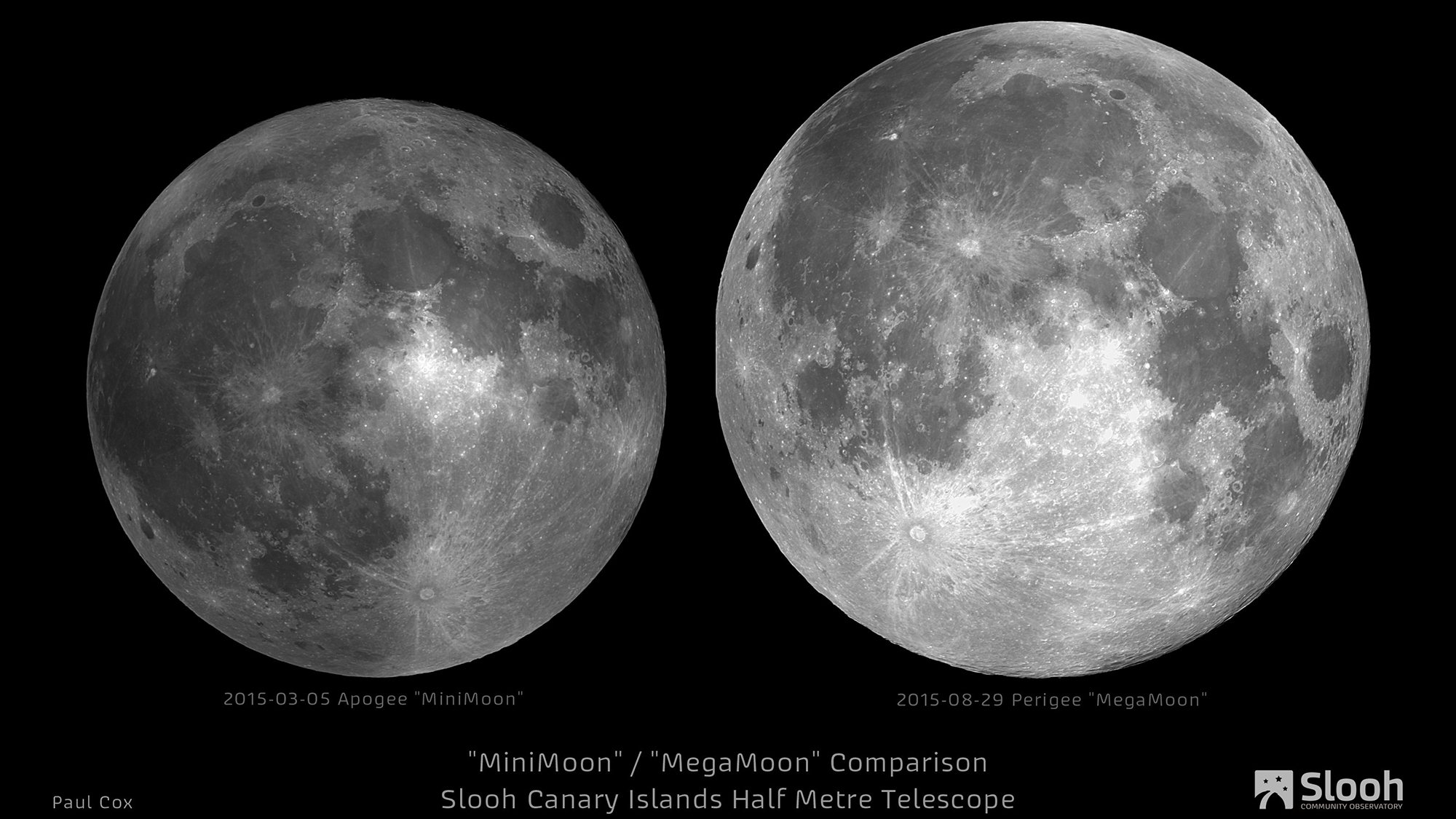How to see the 'Super Pink Moon' online in live webcasts today
A "Super Pink Moon" will rise into the evening sky today (April 7), and you can watch it online with webcasts from The Virtual Telescope Project and Slooh.
Tonight's supermoon — named after a pink wildflower, Phlox subulata — will be the closest full moon of 2020. The moon reaches perigee, or the closest point to Earth in its elliptical orbit, at 2:08 p.m. EDT (1808 GMT). At that time, the moon will be 221,905 miles (357,122 kilometers) away from Earth, compared to its average distance of 240,000 miles (384,400 km). The moon will become officially full about 8.5 hours after reaching perigee, at 10:35 p.m. EDT (0235 GMT on April 8).
Supermoons, or full moons that coincide with the moon's perigee, appear about 7% larger and 15% brighter than the average full moon. However, the difference may not be noticeable to the casual observer. To get a closer view of tonight's Super Pink Moon — and to learn about the science and history of this special moon-gazing event, two online observatories are offering free webcasts today.
Video: Pink supermoon? Astronomer explains what it is
Related: April's Super Pink Moon is the biggest full moon of 2020. Here's what to expect.
The Virtual Telescope Project
The Virtual Telescope Project, an online observatory founded by astrophysicist Gianluca Masi of the Bellatrix Astronomical Observatory in Ceccano, Italy, will stream live views of the Super Pink Moon rising over Rome beginning at 1:30 p.m. EDT (1730 GMT). You can watch it live in the window above, courtesy of the Virtual Telescope Project, or directly via its YouTube channel.
"Looking up at the skies while all around the planet we are battling COVID-19, is a precious source of beauty and strength, ideally connecting all of us with the cosmos where we live," Masi said in a statement. "You are invited to safely join our free, live webcast from the comfort of your home."
"We will admire our satellite rising above the skyline of Rome, the Eternal City, enjoying the largest full moon of the year," he added. "All this while we celebrate in April the 2020 Global Astronomy Month, the world's largest global celebration of astronomy: this event is part of the international happening."
Breaking space news, the latest updates on rocket launches, skywatching events and more!
Slooh
Later today, the online observatory Slooh will host another live webcast of the Super Pink Moon.
Slooh's webcast will begin at 7:30 p.m. EDT (2330 GMT), and you can watch it live here on Space.com, courtesy of Slooh, or directly via Slooh's YouTube channel.
Slooh astronomer Paul Cox and his team of experts and educators, including the renowned astronomy writer Bob Berman, will discuss the science and history of the supermoon while showing live views from Slooh's telescopes at the Institute of Astrophysics of the Canary Islands and in Chile.
Editor's note: If you have an amazing supermoon photo you'd like to share for a possible story or image gallery, you can send images and comments in to spacephotos@space.com.
- How the 'supermoon' looks (infographic)
- No, the 'Super Pink Moon' isn't really pink … though we wish it was
- 'Super Pink Moon' rises tonight! Teach your kids about the biggest full moon of 2020
Email Hanneke Weitering at hweitering@space.com or follow her @hannekescience. Follow us on Twitter @Spacedotcom and on Facebook.
OFFER: Save 45% on 'All About Space' 'How it Works' and 'All About History'!
For a limited time, you can take out a digital subscription to any of our best-selling science magazines for just $2.38 per month, or 45% off the standard price for the first three months.

Hanneke Weitering is a multimedia journalist in the Pacific Northwest reporting on the future of aviation at FutureFlight.aero and Aviation International News and was previously the Editor for Spaceflight and Astronomy news here at Space.com. As an editor with over 10 years of experience in science journalism she has previously written for Scholastic Classroom Magazines, MedPage Today and The Joint Institute for Computational Sciences at Oak Ridge National Laboratory. After studying physics at the University of Tennessee in her hometown of Knoxville, she earned her graduate degree in Science, Health and Environmental Reporting (SHERP) from New York University. Hanneke joined the Space.com team in 2016 as a staff writer and producer, covering topics including spaceflight and astronomy. She currently lives in Seattle, home of the Space Needle, with her cat and two snakes. In her spare time, Hanneke enjoys exploring the Rocky Mountains, basking in nature and looking for dark skies to gaze at the cosmos.


